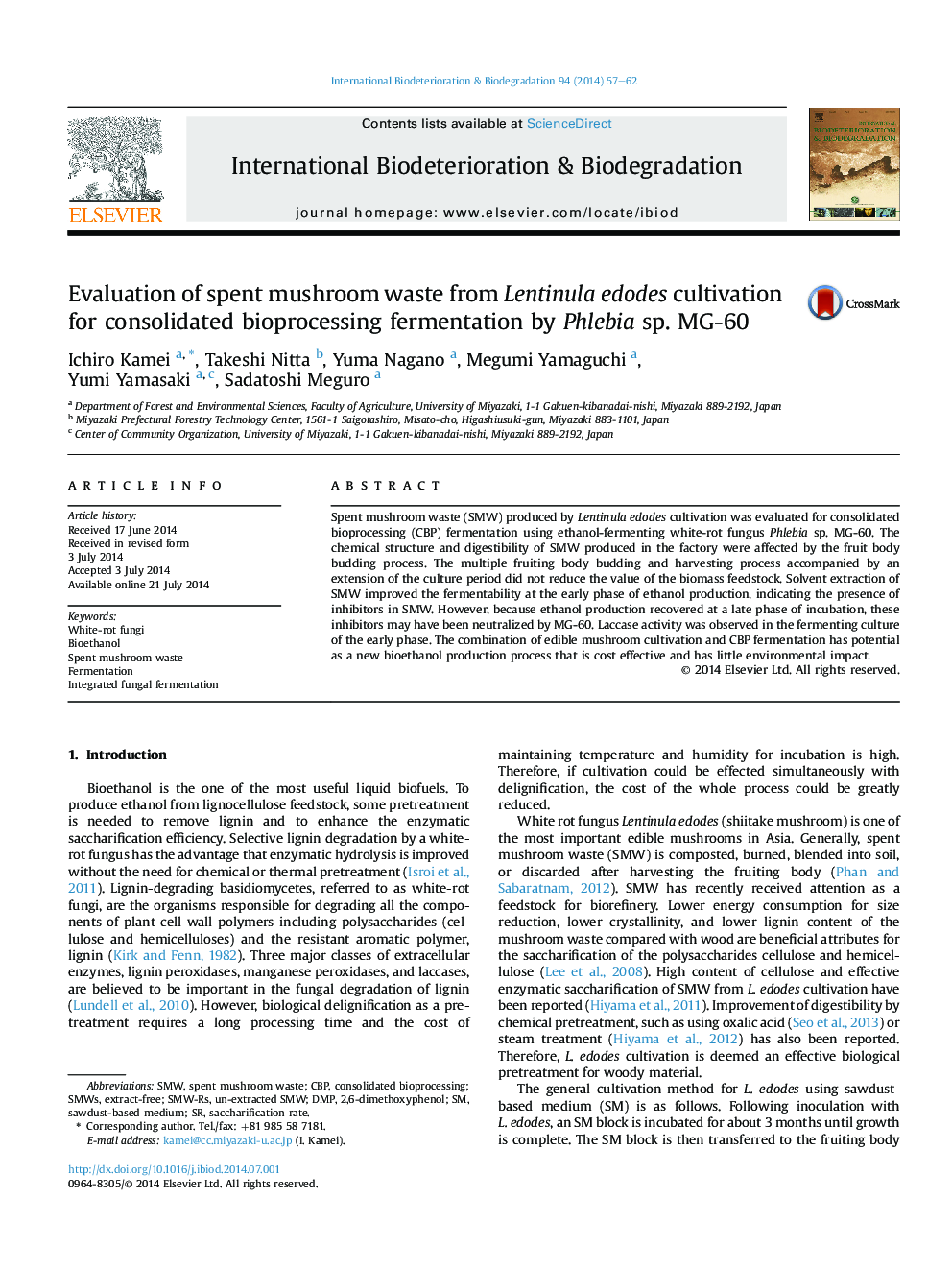| Article ID | Journal | Published Year | Pages | File Type |
|---|---|---|---|---|
| 4364737 | International Biodeterioration & Biodegradation | 2014 | 6 Pages |
•A combination of edible mushroom cultivation and CBP fermentation was proposed.•Fruiting body budding and harvesting processes affected feedstock quality.•Laccase was produced at the early stage of fermentation by Phlebia sp. MG-60.•Neutralization of fermentation inhibitors by Phlebia sp. MG-60 was suggested.
Spent mushroom waste (SMW) produced by Lentinula edodes cultivation was evaluated for consolidated bioprocessing (CBP) fermentation using ethanol-fermenting white-rot fungus Phlebia sp. MG-60. The chemical structure and digestibility of SMW produced in the factory were affected by the fruit body budding process. The multiple fruiting body budding and harvesting process accompanied by an extension of the culture period did not reduce the value of the biomass feedstock. Solvent extraction of SMW improved the fermentability at the early phase of ethanol production, indicating the presence of inhibitors in SMW. However, because ethanol production recovered at a late phase of incubation, these inhibitors may have been neutralized by MG-60. Laccase activity was observed in the fermenting culture of the early phase. The combination of edible mushroom cultivation and CBP fermentation has potential as a new bioethanol production process that is cost effective and has little environmental impact.
